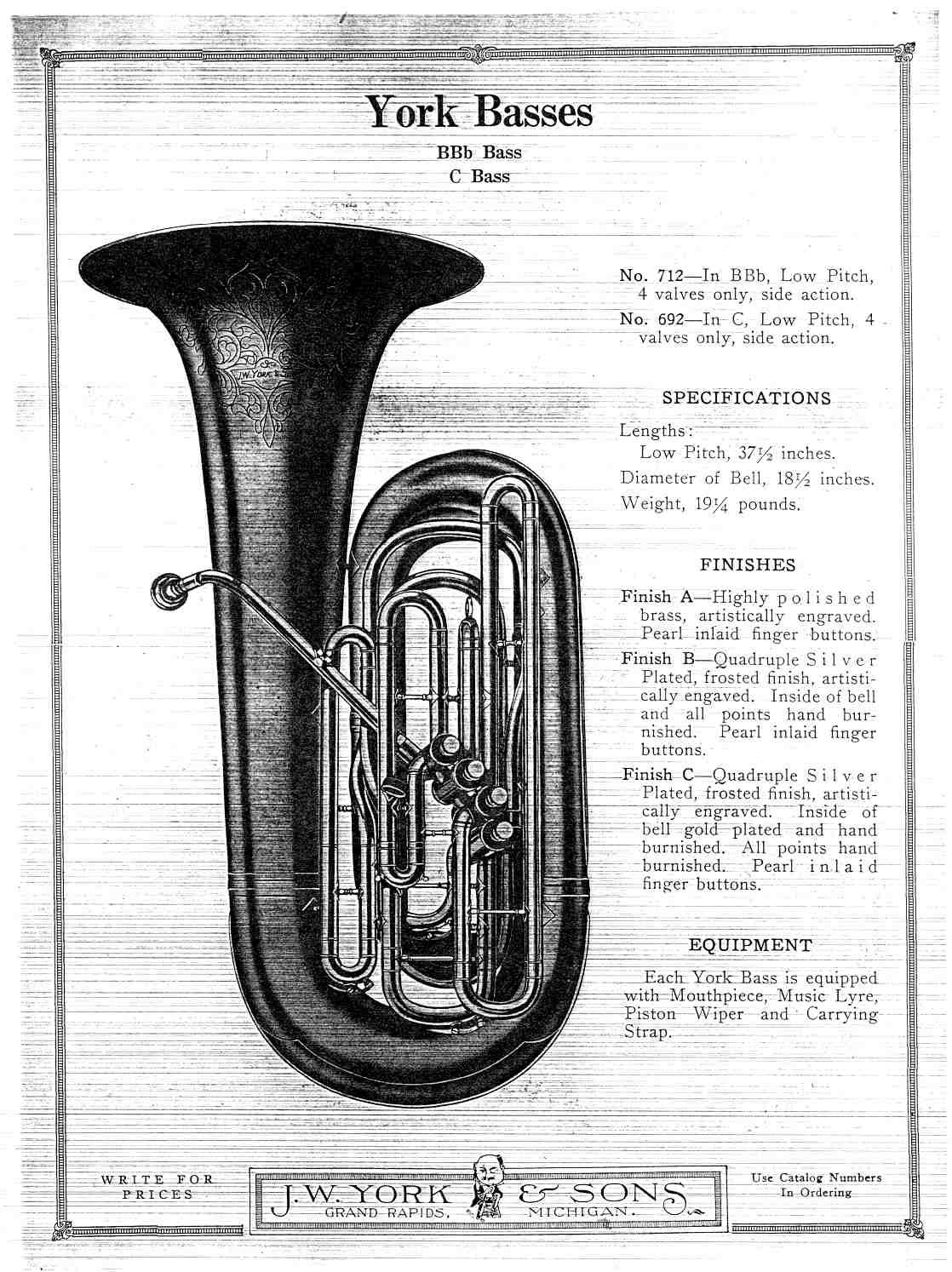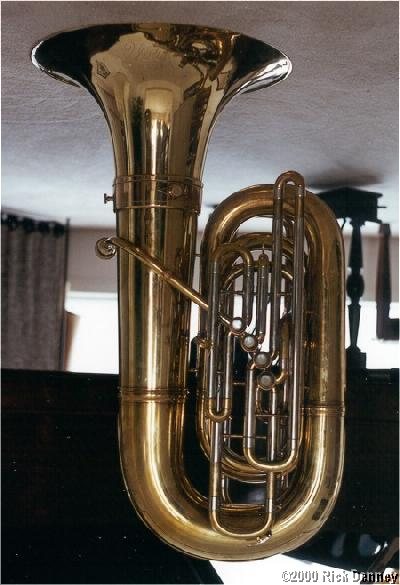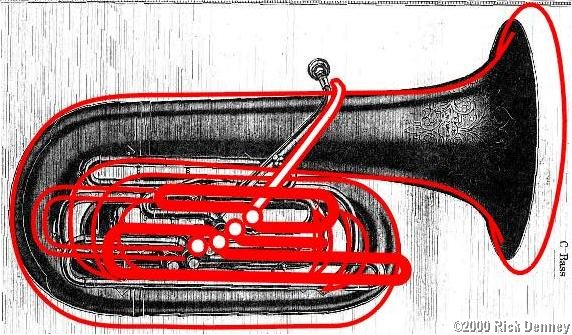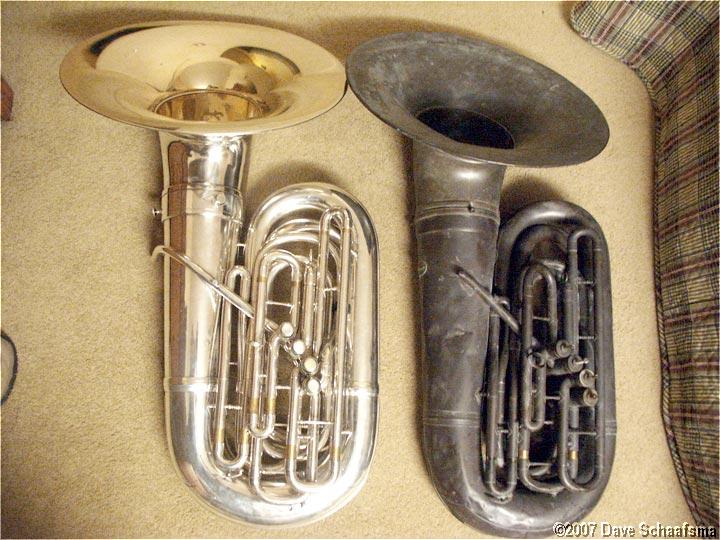York and York Master: Old vs. New
Comes my way: Copies of pages concerning tubas from a J.W. York & Sons catalog, published perhaps in the 1920's. Also, a discussion on Tubenet encourages a fresh look at these pages, plus a call to put them onto the web. Putting them all on the web is a future project, but I can't resist the opportunity to compare the revered old York with the Böhm and Meinl-made upstart from 40 years later. Granted, "new" is a bit of a misnomer, the newer of the two Yorks compared here is at least 32 years old, and possible as much as ten years older than that. Thus, the "new" York Master is possibly half as old as the J.W. York depicted in the old catalog.
But the instruments made in Grand Rapids have the special reputation, and the instruments with the label but not the Michigan fingerprints don't quite share that cachet.
So, what are the real differences, at least based on physical appearances?
Let's take a look.
Here's a page out of the J.W. York & Sons catalog (my copy is poor--this is as good as it gets):

One key difference glows in the dark. The stated weight of the Model 712 is 19.5 pounds, which is a full ten pounds lighter than the York Master. I don't think the bell attachment ring accounts for that difference fully.
In this image (the same as elsewhere on this site except oriented and scaled to be similar to the above), we see the front side of my York Master, which was made in Germany by Böhm and Meinl in the 60's:

There are lots of similarities, but also many differences. I've made an outline of the York Master, and here it is, superimposed on a piece of the old catalog page:

I've turned it sideways so that you can see it all at once. The red indicates the York Master, showing the outline of the main branches, bell, tuning slide, leadpipe, and valves. The three valve loops are shown as solid red, and the fourth valve loop is not shown to avoid too much clutter.
The catalog rendering is turned at an angle (you can see the sides of the valve casings), and that probably explains the difference in apparent width of the body of the tuba. The height difference is real--the York Master is 39" tall and the Model 712 is 37.5 inches tall. Also, the York Master's 20" bell is larger than the 18.5" bell on the old York. Of course, I'm hoping that the artist employed to create the catalog page did his job accurately, but there's no way to confirm that without some York owner loaning me an original for measurement. Should such an opportunity come my way, I think I could get the measurement work done in about, oh, three or four years.
Some differences are apparent. The valves on the York Master are higher in the body, though they follow the similar diagonal arrangement common to old front-action tubas (but not followed by the Chicago York, which has valves arranged vertically along the horn rather than diagonally along the line of the leadpipe). The bottom bow on the York Master is clearly larger, which means that the taper from the bottom bow to the throat is not as great. The shape of the bell flare is very close to the original, except for the difference in size.
At one time, I entertained the notion that some of the old tooling for 4/4 Yorks might have found its way into the production of the York Master. That notion was pretty well eliminated by the comments of one noted technician, who observed a total lack of interchangeability between Grand Rapids parts and B&M parts, and the drawing here would seem to confirm it. But it was romantically satisfying notion. Clearly, though, the folks at Böhm and Meinl were sensitive to the tradition behind the instrument whose label they were using.
Time passes and guess what? Dave Schaasfma bought a Blessing on Ebay. But his Blessing turned out to be a real blessing, because under the Blessing label it's really a York Model 716. Even better, Dave also owns a beautifully maintained York Master dating from 1955. He made the following picture. This York Master differs from my own by a larger amount than it differs from the vintage York. Dave's YM has the fourth valve tubing in the York position, and the valve body is lower on the instrument as with the real York. Dave's York Master is much more closely modeled on the real York than is mine. They are definitely NOT made from the same tools, however. Here's Dave's description:
The bells are almost identical, the wrap of body of the York is a little taller and narrower and it is noticeably lighter by weight. The valves are also larger in diameter, in fact when I removed one from each, the bottom of the Y-M valve would slip inside the bottom of the York valve. The York valves are also aligned slightly more horizontal (less vertical). The valve tubing for the York a tiny bit less in diameter than the Y-M, maybe a .748 vs. a .750 bore. The plumbing of the valve tubing is extremely similar.
I hope to show more pictures of the York after it has been restored.
